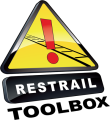15.2 Incident information, including third party involvement
The involvement of third parties is extremely important in incident response, as they influence specific and critical aspects in the sequence of response actions. The following issues are of particularly high importance when a fatality is involved:
• Arranging alternative transport;
• Removing the body from the site;
• Cleaning the train and/or infrastructure;
• Actions to ensure passenger safety – assistance with evacuation, fencing off the area or near the tracks.
Incident management structure
Emergency service command and control is typically based on a Gold, Silver & Bronze structure as shown in the gallery below. It is often established with the police or fire brigade in the lead. The IM leads the rail on-site response supported by the RU. The IM and RU may each establish its own off-site ’Gold’ with the IM providing the single focus for liaison with the Police/Fire Brigade ’Gold’. This ensures that the Police/Fire Brigade are responding to a co-ordinated rail industry position and needs. The extent to which these arrangements are applied will depend on the severity of the incident including its wider impact on rail operations.
The Gold, Silver & Bronze roles are as follow:
(1) Gold. For serious incidents Gold will:
• Set a strategy; maintain an overview of the situation and co-ordinate incident management at the strategic level;
• Ensure sufficient support and resources are provided;
• Resolve issues or problems raised by Silver;
• Liaise with stakeholders (e.g., government and the media).
IM and RU Gold will support the overall strategy, providing input via the IM Gold to the Police/Fire Brigade Gold, to IM and RU Silvers, to their own Crisis Management Groups if established and with the media.
(2) Silver. Silver provides the on-site tactical co-ordination within the overall strategy set by Gold. It co-ordinates the tactical decision making of involved organisations, setting priorities and managing resources to ensure an effective and safe incident response as follows:
• Establish priorities;
• Determine the physical extent of the incident, cordons and access control;
• Enable the needs of investigative organisations;
• Ensure the provision of response equipment;
• Ensure the co-ordination of site safety and activities of all involved organisations;
• Monitor progress of actions and resolve problems, referring to Gold where necessary.
(3) Bronze. The IM and RU will each:
• Establish arrangements to deploy and control its resources to meet the tactics defined by Silver;
• Liaise with other involved organisations to ensure effective use of their specialist support including contractors and equipment;
• Ensure safe and effective work at the site.
The rail incident management structure needs to be aligned with, and support, the arrangements generally applied by the emergency services for any incident.
last update: 2014-09-17 Print

